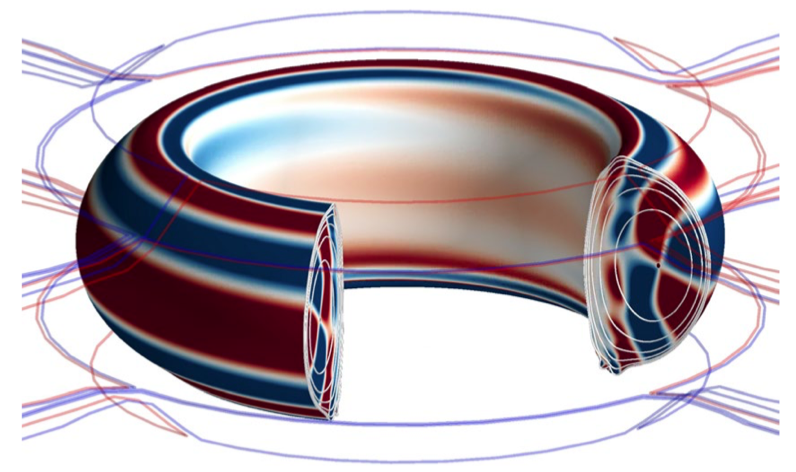A third dimension helps Tokamak fusion reactor avoid wall-destroying instability
Ars Technica » Scientific Method 2018-09-13

Enlarge / Currents and fields in the KSTAR Tokamak. (credit: Jong-Kyu Park)
The success of Tokamaks for fusion is a story unto itself, with the toroidal magnetic containers setting records for keeping high-energy plasmas under control, a necessary step for sustaining fusion. The overriding narrative, at least on the scientific side, is that when you have an unstable plasma, it is really hard to build a control system that keeps the plasma hot and confined, even in a Tokamak.
Now, researchers have used the Korean KSTAR Tokamak to show that they can gain control of a particularly nasty plasma instability called an edge localized mode. The instability essentially exhausts the plasma onto the wall, ablating it away. If a plasma reactor the size of ITER were to have an edge localized mode instability, it would likely destroy the inner lining of the vacuum vessel.
Symmetries giveth, symmetries taketh
I don’t pretend to understand plasma instabilities in a Tokamak very well. But I do know that some of the problems are the result of the shape of the magnetic field. The shape of the Tokamak is a boon: it's symmetric, which makes the device simple, it makes calculations possible, and it offers high confinement.